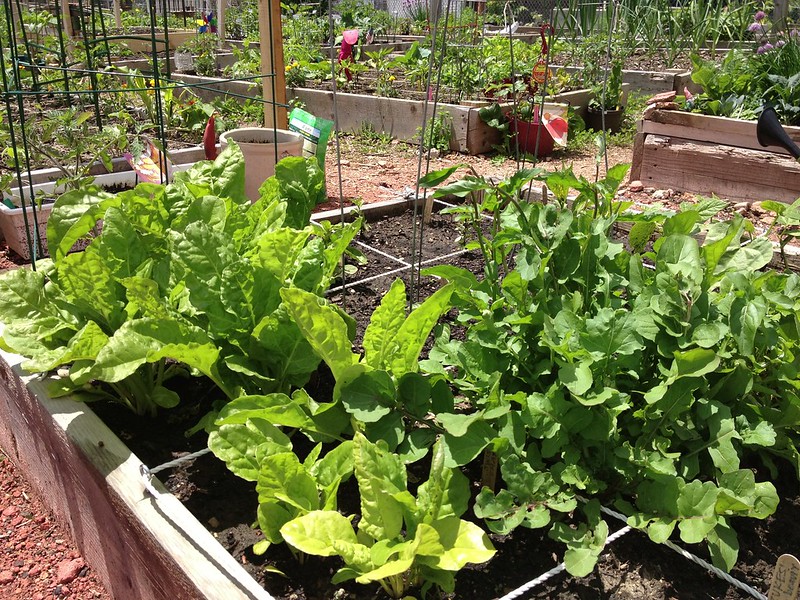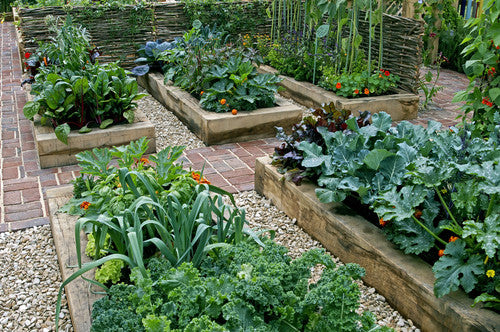Learn Exactly How to Grow a Flourishing Horticulture Environment for All Ability Levels
Developing a flourishing yard is a complex venture that can be welcomed by individuals at any type of skill level. By analyzing vital components such as dirt wellness, proper plant selection, and seasonal care routines, one can create a sustainable horticulture technique that generates satisfying outcomes.
Recognizing Your Yard Area
In the realm of gardening, comprehending your yard area is extremely important to growing a growing landscape (Homestead Gardening). The primary step in this undertaking involves examining the certain characteristics of your plot. Factors such as dirt make-up, sunshine direct exposure, and drainage play important duties in determining the suitability of your yard for various kinds of plants
Begin by conducting a dirt test to assess pH degrees and vitamins and mineral content, which will certainly notify any needed modifications. In addition, observe just how much sunlight your space receives throughout the day. Various plants have varying light needs; some flourish completely sun, while others choose full or partial color.

Last but not least, assess the readily available area and strategy appropriately. This includes thinking about plant heights and infected make certain ample space for development without congestion. By acquiring an extensive understanding of your yard area, you established the structure for a successful horticulture experience.
Choosing the Right Plants
Choosing the right plants for your garden calls for mindful factor to consider of numerous elements, consisting of climate, dirt problems, and personal preferences. Start by analyzing your regional climate, as specific plants flourish specifically temperature ranges and weather condition patterns. For instance, exotic plants might not endure in cooler regions, while hardy perennials can stand up to rough winters months.

Consider your individual choices, including visual appeal and upkeep levels. Choose whether you prefer vibrant blossoms, lavish foliage, or edible crops. In addition, consider the moment and effort you want to spend in plant treatment, as some selections demand even more interest than others.
Lastly, consider the garden's design and light exposure. Sunlight patterns throughout the day will certainly influence your options-- some plants require complete sun, while others grow in color. By thoughtfully assessing these aspects, you can create a unified and productive garden customized to your atmosphere and preferences.
Vital Horticulture Tools
A well-appointed gardener see can substantially enhance their gardening experience and results. Crucial horticulture devices are basic to cultivating a successful yard, no matter skill degree. First, a durable spade is vital for digging and transforming dirt, while a trowel enables for specific growing and transplanting of smaller plants.
Trimming shears are crucial for preserving plant wellness by eliminating overgrown or dead branches, advertising much better air blood circulation and development. Furthermore, a hand rake is helpful for clearing debris and aerating the soil, ensuring ideal conditions for plant origins.
Gardening handwear covers secure hands from blisters, chemicals, and thorns, making them an important accessory. A watering can or hose with an adjustable nozzle makes sure that plants receive adequate wetness without overwatering.
Lastly, consider spending in a tough wheelbarrow for transporting dirt, plants, and tools around the garden effectively. By constructing a quality toolkit that includes these essential items, garden enthusiasts can tackle numerous tasks with self-confidence and ease, paving the means for a prospering horticulture setting. Remember, the right tools not just improve effectiveness yet additionally boost the overall satisfaction of the horticulture process.
Soil Preparation and Maintenance
Quality dirt is the structure of a successful garden, making correct prep work and maintenance critical for healthy plant growth. Based on the test results, amendments can be made to enhance dirt problems for specific plant demands.
Integrating natural matter, such as compost or well-rotted manure, is important for boosting soil structure and fertility. This not only improves nutrient schedule however likewise promotes beneficial microbial activity. Additionally, proper drain is crucial; hefty clay soils may need the addition of sand or perlite to enhance oygenation.
Normal upkeep of soil health includes mulching, which preserves wetness and subdues weeds. Rotating plants annually assists prevent nutrient depletion and decreases parasite and condition dangers. It is also vital to stay clear of over-tilling, which can interrupt soil structure and injury advantageous organisms.
Inevitably, a constant dedication to soil prep work and maintenance will result in a prospering garden, making sure that plants obtain the crucial nutrients they need for robust development and performance.
Seasonal Care and Administration

In springtime, emphasis on planting brand-new seeds and seed startings, while additionally performing dirt examinations to check my blog change nutrient shortages. Consistently look for conditions and pests, as these can multiply with the warming weather condition. Summer demands regular watering and mulching to retain moisture, together with trimming for much better air circulation.
As fall approaches, it's time to prepare the garden for inactivity. This includes gathering plants, cleaning up debris, and applying a layer of mulch to safeguard plant origins from frost. Consider planting cover crops to enrich the soil during the winter season.
Finally, winter months treatment is critical. Evaluate structures like greenhouses for damage and guarantee appropriate insulation for sensitive plants. Routinely monitor for pests that may look for refuge inside. By adapting your gardening practices to the seasonal cycles, you can cultivate a prospering atmosphere that supports plant health year-round.
Conclusion
In conclusion, growing an effective garden needs a detailed understanding of important concepts such as dirt structure, sunlight exposure, and suitable plant selection. Routine seasonal treatment and monitoring techniques better enhance plant wellness and efficiency.
Selecting the right plants for your yard requires mindful factor to consider of various variables, consisting of climate, soil conditions, and individual choices. Conduct a soil examination to figure out pH levels and nutrition content, which will assist you in selecting plants that will certainly prosper in your yard.Finally, think about investing in a sturdy wheelbarrow for moving dirt, plants, and tools around the see here now yard efficiently.Quality soil is the structure of an effective yard, making appropriate prep work and maintenance essential for healthy plant development. Homestead Gardening.In final thought, growing a successful yard needs a comprehensive understanding of essential principles such as dirt composition, sunshine exposure, and ideal plant selection
Comments on “What to Cultivate in Your Homestead Gardening Setup”